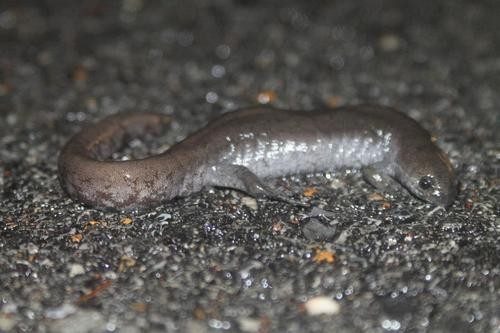Small-mouth salamander
A species of Mole salamander, Also known as Porphyry salamander, Small-mouthed Salamander Scientific name : Ambystoma texanum Genus : Mole salamander
Small-mouth salamander, A species of Mole salamander
Also known as:
Porphyry salamander, Small-mouthed Salamander
Scientific name: Ambystoma texanum
Genus: Mole salamander
Content
Description People often ask General Info
 Photo By keegansmith417 , used under ALL RIGHTS RESERVED /Cropped and compressed from original
Photo By keegansmith417 , used under ALL RIGHTS RESERVED /Cropped and compressed from original Description
The small-mouth salamander (Ambystoma texanum) is a species of mole salamander found in the central United States, from the Great Lakes region in Michigan to Nebraska, south to Texas, and east to Tennessee, with a population in Canada, in Pelee, Ontario. It is sometimes referred to as the Texas salamander, porphyry salamander, or the narrow-mouthed salamander. The Kelleyâs Island salamander (Ambystoma nothagenes) was synonymized with A. texanum
People often ask
General Info
Lifespan
10-15 years
Diet
Small-mouth salamander primarily consumes small, soft-bodied invertebrates, with a key emphasis on annelids and crustaceans. Captive individuals show clear preferences for earthworms and crickets, usually hunting at night or during wet weather.
Appearance
Small-mouth salamander are medium-sized amphibians, measuring about 7 to 14 cm in length. They exhibit a sturdy, elongated body with glossy, moist skin. Generally, their color ranges from brown to grey, sometimes displaying faint dark spots. Notably, small-mouth salamander possess a broad, flat head and a long, slender tail. There are no significant differences in appearance due to age, gender or subspecies.
Behavior
Small-mouth salamander exhibits largely terrestrial behaviors, despite being an amphibian. Known for its nocturnal foraging for invertebrates, small-mouth salamander shelters during the day, primarily in burrows or under vegetation. This species is generally solitary, except for mating season when males display competitive behaviors. Small-mouth salamander a non-migratory species, thrives via multiple adaptive behaviors including burrowing, and cryogenic survival during subzero temperatures.
Population
Stable
Scientific Classification
Phylum
Chordates Class
Amphibians Order
Salamanders Family
Mole salamanders Genus
Mole salamander Species
Small-mouth salamander